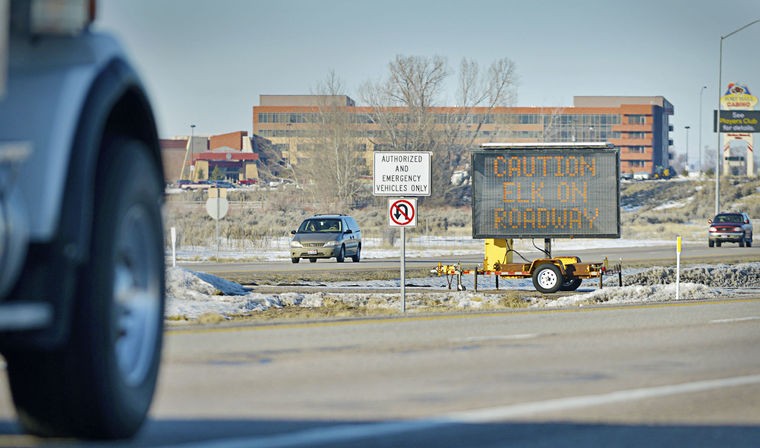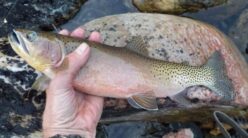FORT HALL — People aren’t the only Southeast Idaho residents affected by recent extreme weather conditions.
Wintering elk that migrate onto the Fort Hall Reservation in search of ranges with forage and refuge from frigid temperatures have been pushed to even lower elevations because of extreme winter weather.
“We’ve been seeing the elk come down here for numerous years,” said Chad Colter, the Shoshone-Bannock Tribes Fish and Wildlife director.
“They’re wintering on two different ranges here with the majority of them east of Fort Hall and a smaller group that comes down on the west side over near Arbon Valley.”
Colter said that the smaller group will start making its way to Interstate 86, and the larger group will move toward Interstate 15.
Weighing more than 800 pounds and oftentimes even more, these animals pose large risks to motorists, especially when road conditions are poor.
To warn motorists about the potential for wildlife on the interstates, the Shoshone-Bannock Tribes have requested the Idaho Department of Transportation utilize several LED message boards.
“We’ve been preparing for this for several years,” Colter said. “We’ve seen this occurring more and more, and the more severe the winter it seems like the more animals are pushed down lower.”
Colter added that Southeast Idaho, including Pocatello, Fort Hall and Blackfoot, lies right in the middle of the elk’s winter range.
“If we weren’t here, they would be,” he said. “Municipalities have displaced them a bit, but they’re still here and they know nothing more than to move to lower ground when the weather gets bad. They’re just following their natural patterns.”
Colter and tribal officials have drafted a big game winter management plan in anticipation that these events will continue to occur and expect some years to have bigger herds than others.
Currently, the smaller herd in the western area consists of about 200 or 300 elk, and the larger group is about 400 or 500 strong.
“We have to implement some measures to protect the animals as well as the public,” Colter said. “We don’t want to see any motorist-and-animal accidents, but we also don’t want to make this into a big feeding program.”
A supplemental feeding program has been initiated along with road closures and additional signage cautioning motorists of wildlife presence on rural reservation roads.
Colter said that the elk aren’t used to a bale of hay getting put out so it takes some time for the animals to adjust.
“They are starting to eat some of it as well as some high-density pellets,” he said. “We are targeting their trails and intercepting them with feed to keep them from getting too low and causing havoc on the interstates.”
These proactive measures are to ensure a viable and sustainable elk population survives for future generations.
According to a Shoshone-Bannock Tribes press release, “The tribes are aware that these elk herds provide great viewing opportunities but during these critical winter months, these animals are at their most vulnerable.”
The tribes are asking the public to refrain from any travel through the elk’s winter grounds to avoid triggering a mass migration across a public roadway.
And motorists are advised to slow down and be cautious because the roads are slick and there may be wildlife species present on or along the interstates and rural reservation roads.
“We want to keep the animals safe and the public safe, which means lots of patrolling,” Colter said. “We have guys out there every day, every evening and all the time really just making sure these animals don’t get over to the interstate.”



